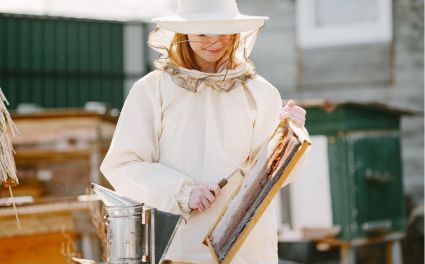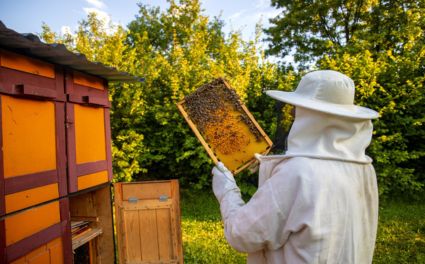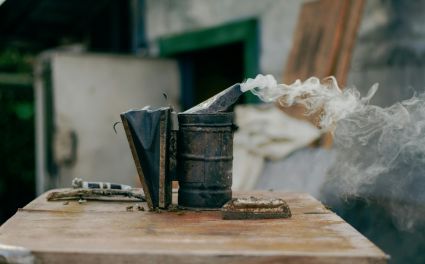Have you ever wondered why bees devote themselves to making honey? The answer is more fascinating than you might expect. Honey isn’t just a sweet treat for humans—it’s the foundation of bee survival, a marvel of natural engineering, and a cornerstone of our global ecosystem.
In this article, we’ll dive into the honey production process, explore why bees make honey, and understand its importance not only for bee colonies but also for agriculture, biodiversity, and human culture.
The Honey Production Process: From Nectar to Gold
Bees are expert foragers, tirelessly visiting flowers to collect nectar. This isn’t done for pleasure—it’s a matter of survival. The transformation from nectar to honey involves several precise steps:
1. Enzymatic Breakdown
When bees return to the hive, the nectar they’ve collected is broken down in their stomachs. Special enzymes convert complex sugars into simpler ones like glucose and fructose. This kickstarts the honey-making process and ensures the nectar can be stored without fermenting.
2. Evaporation and Water Reduction
Nectar is naturally watery. To thicken it, worker bees spread droplets across honeycomb cells and fan their wings to accelerate evaporation. This reduces the water content from around 70% down to 18%, transforming nectar into dense, long-lasting honey.
3. Sealing the Honeycomb
Once the honey is ready, bees cap the filled cells with a thin layer of wax. This natural seal locks in freshness, prevents moisture absorption, and signals to the colony that food reserves are secure.
Did You Know?
A single honeybee produces just 1/12 of a teaspoon of honey in its lifetime. It takes about 2 million flower visits to make a single pound of honey!

Why Do Bees Make Honey?
Honey is not a luxury for bees—it’s survival fuel. Here’s why it’s essential:
-
Energy Source for Daily Activity – Honey provides carbohydrate-rich fuel for the hive’s endless work.
-
Winter Survival – During cold months when flowers disappear, honey reserves keep colonies alive.
-
Larval Development – Honey helps produce royal jelly, critical for queen larvae growth.
-
Swarming & Expansion – Stored honey sustains bees when starting new colonies.
-
Emergency Reserves – Extra honey protects the hive during droughts or nectar shortages.
Honey as a Multi-Functional Substance
Honey isn’t just food. It plays many roles:
-
Nutrition: Rich in sugars, vitamins, and minerals.
-
Comb Construction: Provides energy for wax production to build honeycomb.
-
Antibacterial Power: Naturally antimicrobial, protecting hive health.
-
Cultural Value: Used in human food, medicine, and traditions for thousands of years.
For beekeepers managing hives, protective clothing such as beekeeping jackets, beekeeping suits, and beekeeping gloves is essential. These items, along with beekeeping veils, beekeeping trousers, and specialised gear like beekeeping kids suits and beekeeping ankle protection, ensure safety and comfort when working with hives. Our brand, OZ Armour, is trusted worldwide for high-quality, durable beekeeping gear.

Environmental and Ecological Significance
Honey production isn’t just important for bees—it’s vital for ecosystems and human agriculture:
-
Pollination Power – Bees pollinate one-third of global food crops.
-
Agriculture Dependence – Fruits like apples, almonds, and blueberries rely heavily on bee pollination.
-
Biodiversity Support – Bees sustain wildflowers and native plants, maintaining healthy ecosystems.
-
Hive Climate Control – By evaporating nectar into honey, bees regulate humidity inside the hive.
Conservation Challenges Facing Bees
Despite their importance, bee populations are under threat:
-
Colony Collapse Disorder (CCD) – Worker bees abandoning hives.
-
Pesticides – Chemicals weakening immunity and disrupting navigation.
-
Habitat Loss – Urbanisation and monocultures reducing nectar diversity.
-
Climate Change – Shifting flowering seasons affecting survival cycles.
Protecting Bees: Human Responsibility
We can support bees by:
-
Planting wildflower-rich gardens.
-
Reducing pesticide use.
-
Supporting ethical beekeepers.
-
Raising awareness of the importance of honeybees.
For more insights, you can always read more blogs about beekeeping and discover sustainable ways to protect pollinators.
Conclusion
The journey from nectar to honey is one of nature’s greatest marvels. For bees, honey is survival, medicine, building material, and security. For humans, it’s a gift—nutritious, cultural, and economic.
As we enjoy honey, let’s remember the tireless work behind every drop and the crucial role of bees in keeping ecosystems and agriculture thriving. By supporting pollinator health and using quality gear from brands like OZ Armour, beekeepers and communities alike can ensure a future where bees continue to flourish.




